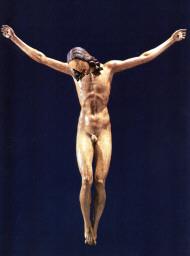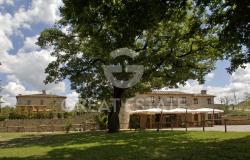A small wooden carving of Christ on the cross, attributed four years ago to Renaissance giant Michelangelo, has been acquired by the Italian state, the culture ministry said Thursday.
The cross, bought from Turin collector Giancarlo Gallino for an undisclosed sum, will be presented to the press at the Italian embassy to the Holy See on Friday.
Pope Benedict XVI will be shown it when he visits the embassy on Saturday and meets Foreign Minister Franco Frattini and Culture Minister Sandro Bondi.
The culture ministry did not say where the cross's new home would be.
The limewood carving made its first-ever public appearance in Florence in 2004, shortly after its new attribution.
It was displayed for four months at the Tuscan city's Horne Museum before returning to Gallino's collection.
Earlier that year experts attributed it to a young Michelangelo, who lived from 1475 to 1564.
It was tentatively dated to 1495, when the artist was 20.
The experts were convinced by the style of the piece rather than documentation.
The 41.3cm carving was assessed by a mixed team of professors and scientists from Florence, Siena and Perugia universities, who tested it with CAT scans and examined it for the anatomical accuracy for which Michelangelo was renowned.
They reported that the posture, bones and musculature were ''perfectly in keeping with the body of a 30-year-old man who had died less than 48 hours previously''.
The custodian of Florence's Santo Spirito Church, Niccolo' Bichielli, is known to have allowed Michelangelo to study corpses but many believe he was also allowed to dissect them.
Although dissection was illegal, Michelangelo felt it was the key to understanding the body and portraying it realistically.
According to the Florentine painter and writer Giorgio Vasari, a contemporary of Michelangelo, the artist ''very often used to flay dead bodies in order to discover the secrets of anatomy''.
In addition, studies of the cross found that the 20-year-old Michelangelo ''probably changed his mind halfway through the sculpture''.
Initially, the Christ's head was too bowed for the slant of the body so it was lopped off and reattached with a wedge of wood at an accurate angle.
While Michelangelo is traditionally known for the daunting scale of his pieces, Perugia University's Giancarlo Gentilini explained it was highly feasible he would have created such a small, detailed sculpture during this period.
''The young Michelangelo had close ties to the circle of (Florentine monk Girolamo) Savonarola, which was responsible for the spread of these small crucifixes,'' the professor noted.
''There would have been plenty of opportunities to carve such images and it's very likely that one of his principal customers, the Dominican monks in Bologna or Lorenzo di Pierfrancesco de Medici, would have requested one''.










